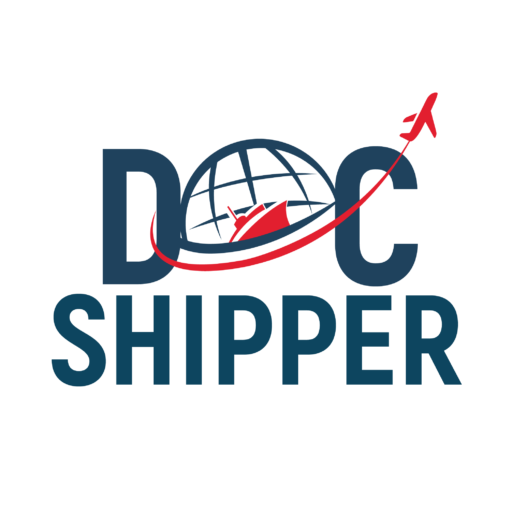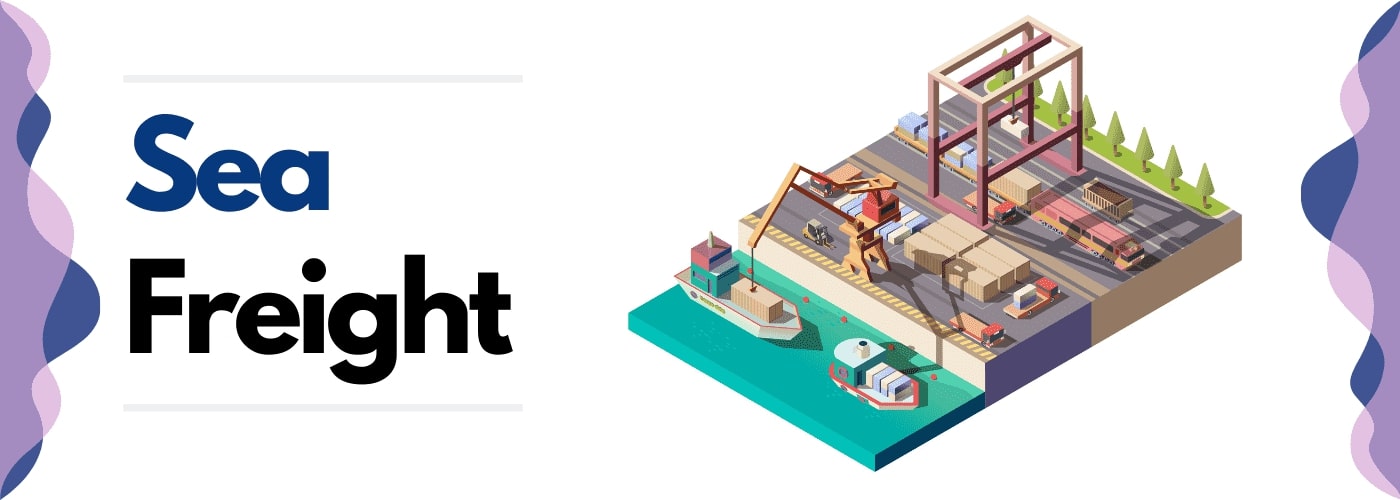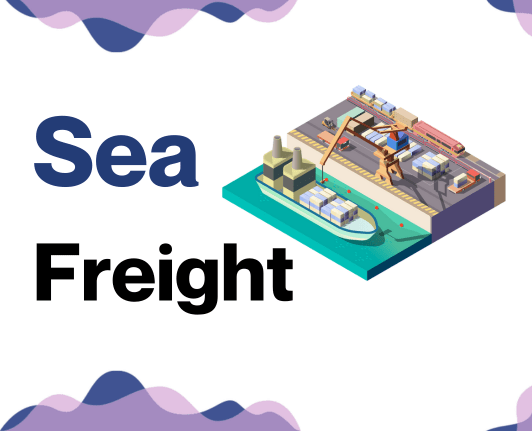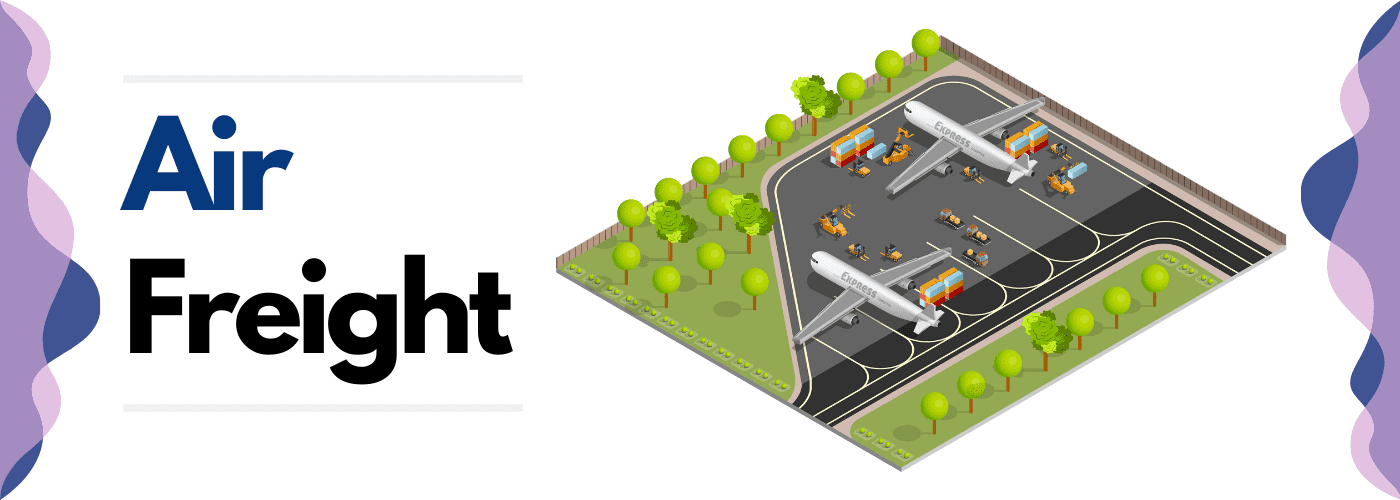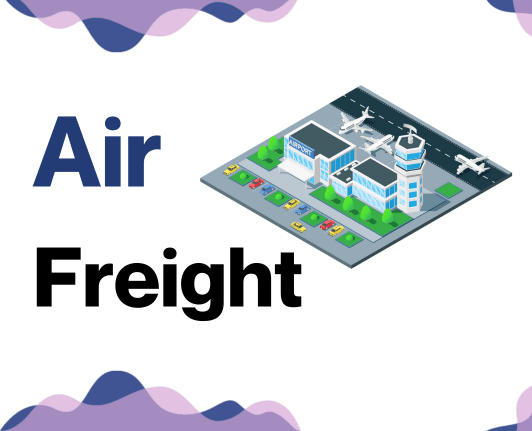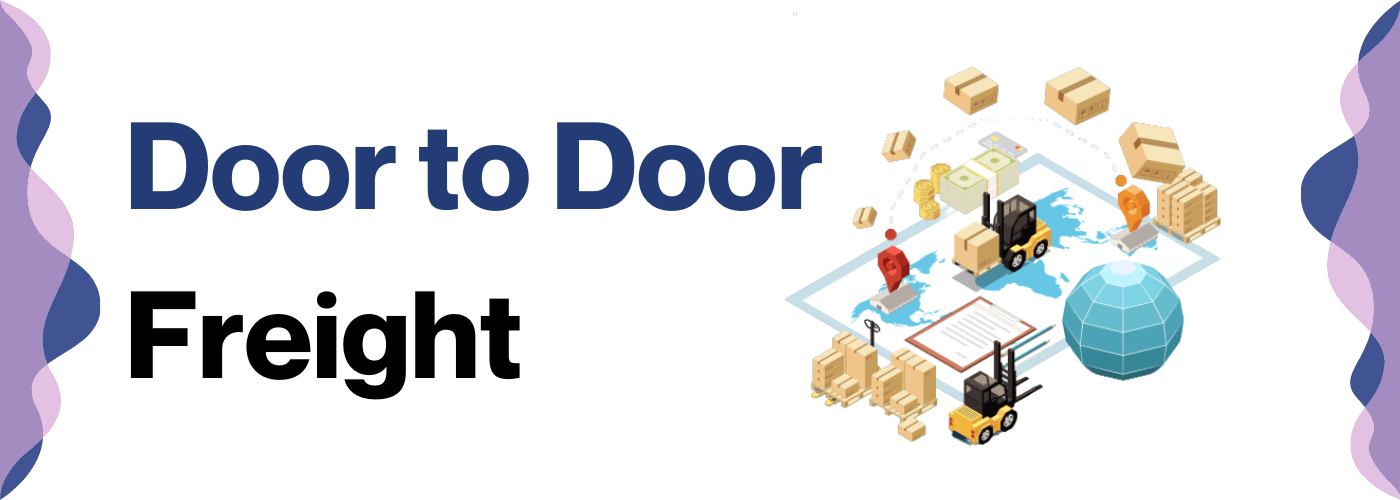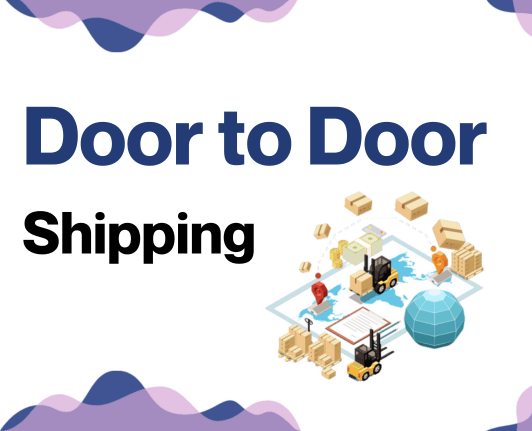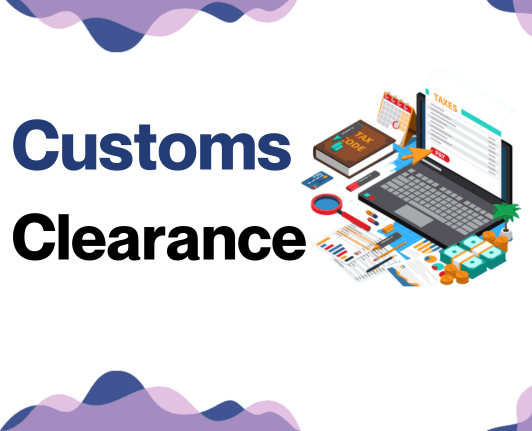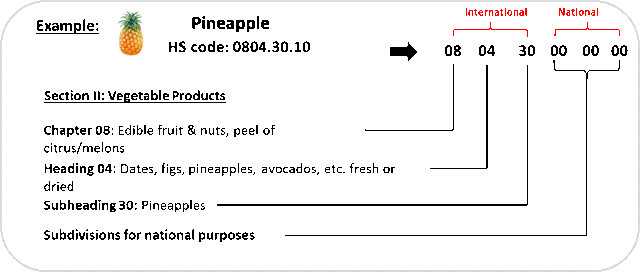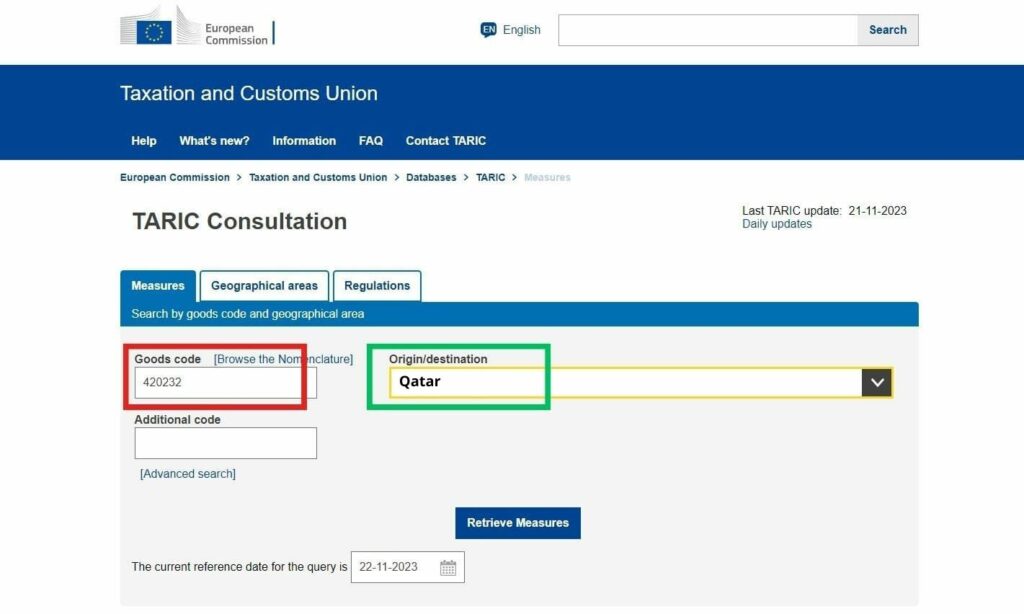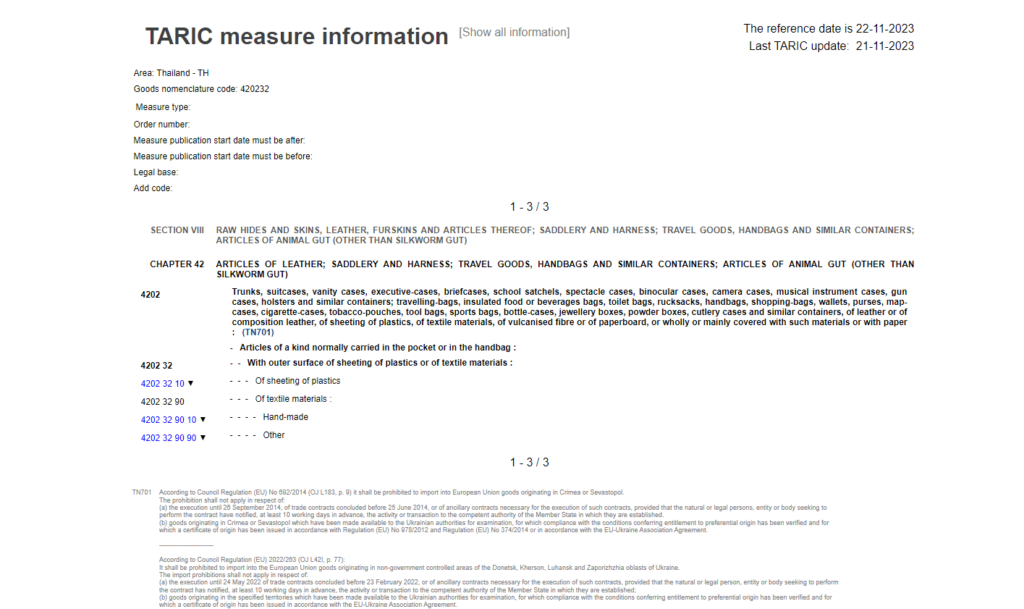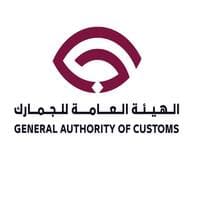Who thought freight transportation between Qatar and Tunisia could be as interesting as a World Cup soccer final! As businesses expand their reach internationally, grappling with freight rates, daunting transit times, and the intricate maze of customs regulations often feels like a tricky halftime strategy.
This guide promises to be an indispensable playbook, offering clear insights into the various freight options–be it by road, sea, air, or rail–while delving into the specifics of customs clearance, duties, taxes, and more. Sprinkled throughout are handy tips and advice tailored for businesses looking to make that winning goal into new territories.
If the process still feels overwhelming, let DocShipper handle it for you! As an international freight forwarding maestro, we ensure every step of the shipping process is harmonious, turning potential obstacles into triumphant success stories for your business.
Table of Contents
Which are the different modes of transportation between Qatar and Tunisia?
Picturing a journey between Qatar and Tunisia? It's no quick drive around the block. These countries have a whole lot of land and sea separating them. Not to mention, international borders!
Let's put on our thinking caps—imagine we're playing a giant game of chess. Choosing the right shipping method is like deciding which chess piece to move. Do we leap over the board with air freight, sail the seas with ocean freight, or explore a combo of both? The trick is to align with your unique shipping needs. We'll guide you in making your winning move.
How can DocShipper help?
Streamline your goods shipment from Qatar to Tunisia with DocShipper. Our dedicated team manages all complexities of international transportation, ensuring your cargo gets to its destination safely and efficiently. For a hassle-free process, let us handle both transport and customs clearance. Got a question? Give our experts a call. Ready for a free estimate? Contact us and receive it within 24 hours. Your global shipping solutions are just one call away.
DocShipper Tip: Sea freight might be the best solution for you if:
- You're dealing with hefty quantities or large-scale goods. Sea freight is your go-to for maximizing space without stretching your budget.
- Your cargo doesn't have an urgent deadline, as sea freight typically has longer transit times compared to air or rail.
- Your shipping routes are between major ports, allowing you to leverage the extensive global network of sea shipping lanes.
Sea freight between Qatar and Tunisia
Shipping goods via ocean routes from Qatar to Tunisia might feel like tracing an ancient Spice Route, but with an added layer of modern-day complexity. The sea-freight relationship between these two is an intricate dance that takes place across the Arabian Sea, touching key ports like Hamad in Qatar and Rades in Tunisia. High volume goods find their sweet rhythm in the cost-effective and slow music of sea freights, making their journey worthwhile.
Now imagine sailing in rough seas without a compass—that's how perplexing and mistake-prone ocean shipping can be for our businesses between these two nations. However, with a handy resource such as this guide and the best practices it provides, we'll be able to glide through this challenge like a ship with a seasoned captain. Prepare to unlock the specifics needed to make your sea-freight voyage from Qatar to Tunisia as seamless as Mediterranean waves.
Main shipping ports in Qatar
Hamad Port
Location and Volume: Situated in the south of Doha, Hamad Port is a key gateway to the world, handling a shipping volume of over 1 million TEU annually.
Key Trading Partners and Strategic Importance: China, India, and Saudi Arabia are among the main trading partners. Hamad Port’s strategic importance lies in its size and high-tech equipment, making it one of the largest ports in the Middle East.
Context for Businesses: If you're considering exports to the Middle East, Hamad Port, with its extensive shipping volume and efficient operations, can provide a reliable and important link in your supply chain.
Doha Port
Location and Volume: The Doha Port, located in the capital city, is not as large as Hamad but still serves as an important hub for smaller vessels, cruise ships and maritime trade with nearby regions.
Key Trading Partners and Strategic Importance: Regional trading partners include other GCC (Gulf Cooperation Council) countries. The port's strategic importance lies in its central location, making it a crucial stopover point for regional trade.
Context for Businesses: Doha Port can be useful for businesses aiming for more specific, smaller scale, and regional shipments, particularly if your company specializes in tourism or regional trade.
Ras Laffan Port
Location and Volume: Ras Laffan Port, located in the north of Qatar, is primarily an industrial port that specializes in LNG (Liquefied Natural Gas) shipments.
Key Trading Partners and Strategic Importance: Key trading partners include Japan, South Korea, and India. The strategic importance of this port lies in its specialty – it is one of the world's largest exporters of LNG.
Context for Businesses: If your business deals with energy resources such as LNG, Ras Laffan, with its dedicated LNG terminals, can be a strategic point in your shipping plans.
Al Ruwais Port
Location and Volume: Located in the north of Qatar, Al Ruwais Port is a small but important port handling both passenger and commercial transport.
Key Trading Partners and Strategic Importance: Key trading partners are generally regional, including other GCC countries. Al Ruwais Port is essential as a gateway for regional maritime traffic.
Context for Businesses: Al Ruwais Port may be a good fit for businesses operating on a smaller scale in the region or those with passenger transport needs.
Mesaeeid (Um Said) Port
Location and Volume: Situated in the industrial city of Mesaieed, the Mesaieed (Um Said) Port handles bulk cargo and containers and specializes in the export of petrochemical products.
Key Trading Partners and Strategic Importance: This port primarily trades with countries in Asia like Japan and South Korea but also has strong connections to Europe. Its importance lies in its capability to export large volumes of petrochemical products.
Context for Businesses: If you're engaged in the petrochemical sector, Mesaieed Port should be part of your consideration, given its specializations and strong connections to significant markets in Asia and Europe.
Main shipping ports in Tunisia
Port of Rades
Location and Volume: As the main container port in Tunisia, it's positioned in the Gulf of Tunis. With a shipping volume exceeding 700,000 TEUs annually, it's certainly a hub of activity.
Key Trading Partners and Strategic Importance: This port has a strong connection with key markets in Europe, particularly Italy, France, and Spain. Given its geographic location, it serves as a gateway to North Africa, making it strategically important for businesses looking to penetrate the African market.
Context for Businesses: If expanding your operations to include North Africa and southern Europe is in your strategy, Port of Rades can be an instrumental part of your supply chain due to its robust infrastructure and strategic location.
Location and Volume: Located centrally on the Gulf of Hammamet, Sousse Port is predominantly a fishing port but also sees a substantial amount of commercial traffic. With a shipping volume of approximately 30,000 TEUs annually, it's smaller but still essential.
Key Trading Partners and Strategic Importance: While Sousse Port mainly caters to local and regional maritime traffic, it also facilitates trade with European countries, particularly Italy and France. Its strategic importance lies in serving the central region of Tunisia.
Context for Businesses: If your business requires a smaller, less congested shipping port, or if you’re venturing into sea-food exports, Sousse Port may represent an excellent opportunity with its less crowded shores and access to key fish stocks.
Location and Volume: Located in the north of Tunisia, Port of Bizerte sees a shipping volume of over 200,000 TEUs annually. Situated at the Mediterranean's western end, it serves as a convenient gateway to Europe.
Key Trading Partners and Strategic Importance: Bizerte has strong trade ties with many European nations, most notably with Italy and France. Being the northernmost point of Africa, this port holds strategic importance for international trade.
Context for Businesses: If your key markets are in Europe, especially in its southern region, choosing the Port of Bizerte could reduce your delivery times and offer a strategic advantage.
Port of Gabes
Location and Volume: Positioned in the south of the country, this port sees a shipping volume of around 125,000 TEUs annually. It is the third-largest port in Tunisia.
Key Trading Partners and Strategic Importance: Gabes serves as a significant import and export point for goods moving between Tunisia and various international destinations, with Malta, Italy, and Greece among its key trading partners.
Context for Businesses: If your business model involves significant movement of goods between southern Europe or Mediterranean islands and North Africa, the Port of Gabes could offer a competitive route due to its location and substantial volume handling capacity.
Remember, selecting a port for your shipping needs depends not only on the volume it handles but its location, key partners, and its strategic importance to your business. It's wise to conduct further research and seek advice from local experts before making a decision.
Should I choose FCL or LCL when shipping between Qatar and Tunisia?
Choosing between full container load (FCL) or consolidation—also known as less than container load (LCL)—is a pivotal decision in your sea freight journey between Qatar and Tunisia. This choice impacts not only your budget, but the delivery time and even the success of your shipment. Let's dive into the nitty-gritty of these two main sea freight options, examining their distinct differences to empower you to make a well-informed decision that aligns best with your unique shipping needs.
LCL: Less than Container Load
Definition: LCL, or Less than Container Load, shipping involves consolidating multiple shipments from different shippers in a single container. Your cargo shares space with others, making it a cost-effective option for small shipments.
When to Use: This is the go-to option for volumes less than 13/14/15 CBM, as hiring a full container for such smaller quantities might not be financially optimal. LCL shipment provides flexibility, allowing businesses to ship goods as and when they are ready.
Example: Let's say a Qatar-based furniture company needs to send only a few items to a retailer in Tunisia. Instead of waiting to accumulate enough items to fill a whole container (FCL), they can use LCL freight. Their goods will be shipped sooner and they're receiving payments faster.
Cost Implications: LCL freight rates are generally lower with the price based on the volume of goods rather than a flat-rate per container. However, it's worth noting there could be additional charges like consolidation, deconsolidation, and handling fees, which vary depending on the specific regulations and fees at both the source and destination ports.
FCL: Full Container Load
Definition: FCL (Full Container Load) shipping is a form of sea freight where a single consignee books an entire container, be it 20'ft or 40'ft, for their goods only.
When to Use: FCL shipping offers significant advantages if your shipment is above 15 CBM because it's generally less expensive as the cost per unit is cheaper. Plus, your cargo enjoys better handling due to minimal transportation movement since your container is generally sealed at origin and remains so until it reaches the destination.
Example: Take, for instance, a manufacturer of construction materials in Qatar shipping 18 CBM of products to a buyer in Tunisia. Choosing FCL shipping for this volume provides them with a more economical fcl shipping quote and ensures the safety of their bulk cargo because the fcl container is sealed throughout the journey.
Cost Implications: FCL shipping is quite competitive due to high volume. The more you ship, the lower the cost becomes. Remember that while the initial cost may seem high compared to LCL, dividing the fcl shipping quote by the number of units can result in a cheaper rate in the long run. Keep in mind the added security benefit and decreased handling of your goods as well.
Unlock hassle-free shipping
Choose wisely between consolidation and a full container service with DocShipper. Our experienced freight specialists make cargo shipping between Qatar and Tunisia a breeze, taking into account budget, delivery timeframe, and shipment size. We help you choose the only the most effective solution - be it consolidation for smaller shipments or a full container for larger freights. Ready to simplify your shipping process? Reach out now for a free estimation!
How long does sea freight take between Qatar and Tunisia?
The average transit time for sea freight between Qatar and Tunisia can range significantly depending on many diverse factors. Specific ports of origin and destination, the weight and nature of the cargo, and the distinct shipping lines all contribute to the overall shipping time. For a tailored and accurate quote that considers all these factors, it's recommended to reach out to professionals like DocShipper.
| Ports in Qatar | Ports in Tunisia | Average Transit Time(Days) |
| Port of Ras Laffan | Port of Tunis | 47 |
| Hamad Port | Port of Bizerte | 47 |
| Port Ruwais | Port of Sousse | 47 |
| Misaeed Industrial City | Port of Gabes | 49 |
*These times are averages and can vary. A reliable freight forwarder keeps track of these nuances and provides you with accurate, tailored information.
How much does it cost to ship a container between Qatar and Tunisia?
Understanding the shipping cost from Qatar to Tunisia requires considering several dynamic elements. Ocean freight rates, for instance, can significantly fluctuate based on your Point of Loading, Point of Destination, chosen carrier, nature of your cargo, and monthly market trends. Each CBM could cost anywhere within a broad spectrum. However, pinning down a precise rate is challenging due to these varying factors. Rest assured, our experienced shipping specialists are dedicated to identifying the best rates for you. We provide personalized quotes, considering your unique shipping needs and market conditions, ensuring you get the most cost-effective options for your freight. So, let us guide you on your shipping journey - your cargo is in capable hands.
Special transportation services
Out of Gauge (OOG) Container
Definition: Out of Gauge (OOG) Containers are designed to accommodate cargo that doesn't fit within the dimensions of standard containers. These containers provide solutions for transporting wide, long, or tall goods.
Suitable for: Large or irregularly sized goods, including machinery, vehicles, and construction equipment.
Examples: Construction materials, oversized industrial components, boats, and heavy machinery.
Why it might be the best choice for you: Nowadays, most industries inevitably come across the need to ship out of gauge cargo. If your business deals in equipment that falls outside of standard container sizes, then an OOG container is an invaluable tool for your freight needs.
Break Bulk
Definition: This method involves the shipment of goods individually, on pallets or in bags, instead of in containers. These individual loads are then directly loaded onto the vessel.
Suitable for: Large-sized products that can't be broken down into smaller units. Also good for non-containerizable cargo.
Examples: Heavy machinery, logs, pipes, and bags of grain.
Why it might be the best choice for you: With Break Bulk, you're afforded more flexibility with your goods. If your cargo can't be broken down into smaller loads suitable for standard containers or fits better on a pallet than being confined within a box, break bulk is the ideal option.
Dry Bulk
Definition: Dry Bulk refers to loose cargo loads such as sand, coal, or grains that are loaded directly onto bulk carrier ships in large quantities.
Suitable for: Any dry, granulated or packaged goods that can be poured directly into a ship's hold.
Examples: Coal, fertilizers, gravel, sand, metal ores, and grains.
Why it might be the best choice for you: If your business deals in commodities that can be shipped in large volumes, nothing beats the mass-orientated capabilities of Dry Bulk shipping.
Roll-on/Roll-off (Ro-Ro)
Definition: With Roll-on/Roll-off shipping, vehicles and machinery that can be driven are loaded onto a ro-ro vessel for transport. Ro-Ro ships are equipped with built-in ramps enabling easy loading and unloading.
Suitable for: Cars, trucks, trailers, motorbikes, trains, and any other vehicles or machinery that can be driven or rolled on their own wheels.
Examples: New and used cars, buses, trucks, farm and construction machinery, trailers, and wheeled machinery.
Why it might be the best choice for you: Ro-Ro shipping offers a simple and efficient method to transport motorized goods. If you're in the business of selling vehicles or other self-propelling machinery, then this method significantly reduces loading/unloading times and offers a high frequency of departures.
Reefer Containers
Definition: Reefer containers, or refrigerated containers, maintain a constant temperature regardless of outside conditions. They are climate-controlled for the transport of temperature-sensitive goods.
Suitable for: Any heat-sensitive cargo, from foods to pharmaceuticals.
Examples: Meats, fruits, vegetables, dairy products, and drugs/medicines.
Why it might be the best choice for you: Your perishable goods require a stable temperature during transportation, and with a reefer container, you can ensure your product's quality is maintained from point A to point B.
Whether you’re shipping over-sized construction equipment, bulk grain, a fleet of cars, or temperature sensitive medical supplies, our team at DocShipper will walk you through the logistics maze. Feel free to contact us for a free shipping quote, delivered in less than 24h. We're here to ensure your freight gets to where it needs to be, safe and sound, every time.
DocShipper Tip: Air freight might be the best solution for you if:
- You're up against the clock or have a non-negotiable delivery date. Air freight is your fastest bet for meeting tight timelines.
- Your shipment is on the smaller side, falling below 2 CBM. Air freight is particularly well-suited for compact cargo loads.
- Your goods are destined for locations that aren't well-served by maritime or rail options. Air freight expands your reach by connecting you to a vast array of international airports.
Air freight between Qatar and Tunisia
Shipping air freight from Qatar to Tunisia? It's like having your own express delivery service. Increased speed, undeniable reliability, and cost-effectiveness for smaller and high-value shipments, like luxury watches or critical medical equipment, are the unarguable advantages of air shipment.
Yet, many shippers stumble in the dark. Interpretation errors around the billable weight can make costs skyrocket. Misunderstandings when figuring out the weighty cost of their shipment, using the wrong formula, can result in an unpleasant surprise. Best practices are your roadmap, and neglecting them is like entering a maze blindfolded. High costs and long delays may await, but not if we unravel some of these critical missteps together.
Air Cargo vs Express Air Freight: How should I ship?
Looking to expedite your shipments between Qatar and Tunisia, but confused by the jargon? Well, picture this: air cargo is like booking a seat for your goods on a commercial airplane, while express air freight secures your goods their own charter flight. Let's delve deeper and explore these two transport modes, focus on your business requirements, and figure out the best fit!
Should I choose Air Cargo between Qatar and Tunisia?
Air cargo between Qatar and Tunisia might be your ideal solution. Offering cost-effectiveness and reliability, it's particularly compelling for those needing to ship 100/150 kg (220/330 lbs) and more. Take Qatar Airways and Tunisair, renowned airlines providing exemplary air cargo services. Despite potentially longer transit times due to set schedules, they ensure your freight safety and timely delivery. Discover more about their services: Qatar Airways and Tunisair. Choosing air cargo could perfectly suit your budgetary needs, melding affordability with dependable service.
Should I choose Express Air Freight between Qatar and Tunisia?
Express air freight is a unique, specialized service, dedicated entirely for cargo shipments with no passengers aboard. This option may be your perfect fit especially if you have limited quantities of goods to ship such as under 1 CBM or in the weight range of 100/150 kg (220/330 lbs) between Qatar and Tunisia. Internationally acclaimed express courier firms like FedEx, UPS, and DHL offer these services, ensuring quick and seamless transportation, perfectly suiting urgent or time-sensitive deliveries. Enjoy peace of mind knowing your goods are shipped rapidly and handled with utmost care, offering convenience and efficiency in one package.
Main international airports in Qatar
Hamad International Airport
Cargo Volume: With a handling capacity of 1.4 million tonnes of cargo annually, Hamad International Airport (HIA) is Qatar's main cargo handler.
Key Trading Partners: HIA's most significant trading partners include countries in Asia, Europe, and the Middle East due to its central location. This network facilitates the smooth transit of goods, from manufacturing equipment to luxury items.
Strategic Importance: Acting as the hub for Qatar Airways, HIA's state-of-the-art facilities and its strategic location provide a vital connection for trade between the East and the West, making it an indispensable part of any global shipping strategy.
Notable Features: This airport boasts a fully automated baggage handling system and cargo complex furnished with high-tech equipment, thus ensuring the efficient and safe transit of your products.
For Your Business: Choosing HIA as your shipping gateway means not just access to worldwide destinations but also the benefit of quick cargo handling times. It's crucial if your business relies on speedy delivery or trades in high-value, time-sensitive goods.
Doha International Airport
Cargo Volume: Although a lot smaller than HIA, Doha International Airport still plays a vital role in handling overflow cargo with a capacity of 750,000 tonnes of cargo annually.
Key Trading Partners: The airport caters mainly to local and regional markets, servicing the Middle East as well as some parts of Europe and Asia.
Strategic Importance: Doha International Airport acts as a supplementary partner to HIA, addressing seasonal surges and overflow, thus ensuring that Qatar's service to the international shipping community remains reliable and uninterrupted.
Notable Features: Despite being older than HIA, this airport boasts substantial cargo handling facilities, including temperature-controlled areas for perishables and dedicated spaces for oversized load shipments.
For Your Business: If you trade in flexible delivery time goods or your business can manage occasional longer transit periods, Doha International Airport may serve as a useful backup plan. It gives you a competitive advantage by ensuring continuity, even during peak periods.
Main international airports in Tunisia
Tunis Carthage International Airport
Cargo Volume: With annual cargo volume moving near 45,000 tons, this is a significant point of entry and exit for goods within Tunisia.
Key Trading Partners: Major trading partners include France, Italy, Germany, Spain and China, accounting for a substantial chunk of Tunisia's air cargo flow.
Strategic Importance: Located close to the capital, Tunis, it is the largest airport in Tunisia. It serves as the hub for Tunisair, Tunisair Express, Nouvelair and several other airlines.
Notable Features: Aside from hosting a dedicated freight terminal, features such as 24/7 operations, modern cargo handling equipment, and customs offices on-site, make freight forwarding a breeze.
For Your Business: If you're planning regular air freight to Europe or North Africa, Tunis Carthage's strategic location and extensive network make it a compelling option for your import/export strategy.
Monastir Habib Bourguiba International Airport
Cargo Volume: Typically handling upwards of 3,000 tons of cargo per year.
Key Trading Partners: Key partners are primarily European countries like France, Italy and Germany.
Strategic Importance: Once the main airport in the country, Monastir, situated on the east coast of Tunisia, still retains its significance, servicing both tourist and cargo traffic.
Notable Features: The airport's position allows easy road connection to Tunisian port cities, aiding intermodal transport. The one-stop evolution plan also ensures future capabilities for cargo processing.
For Your Business: Although smaller than Tunis Carthage, Monastir's connectivity to major European destinations, and its infrastructure designed for rapid cargo handling, can enhance the pace of your shipping cycle.
Enfidha Hammamet International Airport
Cargo Volume: Although Enfidha is a relatively new airport, its cargo volume is growing, expected to surpass 5,000 tons annually.
Key Trading Partners: The majority of cargo is to and from European countries such as France, Germany, and the UK.
Strategic Importance: Located in the touristic area of Hammamet and with its modern infrastructure, this airport is an emerging point in Tunisia's air cargo network.
Notable Features: Boasts state-of-the-art infrastructure with ample space for further expansion, including specialized cargo handling facilities.
For Your Business: If your business is geared towards consumer goods, tapping into Enfidha's growing prominence can gain access to European markets. Its potential for growth could accommodate expanding shipping needs.
How long does air freight take between Qatar and Tunisia?
Air freight between Qatar and Tunisia typically takes an average of 4 to 7 days. However, it's important to note that delivery times can vary significantly depending on several factors such as the specific origin and destination airports, the weight and dimensions of the shipment, and the type of goods being transported. For accurate and personalized transit times, we recommend getting in touch with a seasoned freight forwarder like DocShipper.
How much does it cost to ship a parcel between Qatar and Tunisia with air freight?
The price of air freight shipping from Qatar to Tunisia typically ranges from $1.5 to $5 per kilogram. However, definitive pricing isn't feasible due to factors such as the distance between departure and arrival airports, parcel dimensions, weight, and goods' nature. Tailored quotations allow us to consider these variables for an accurate rate that makes the most sense for your shipment. Don't hesitate to contact us; with our case-by-case approach, our team is committed to offering the best value. Contact us and receive a free quote in less than 24 hours.
What is the difference between volumetric and gross weight?
When shipping goods via air freight, there are two types of weight to consider - gross weight and volumetric (or dimensional) weight.
Gross weight is simple: it's the actual physical weight of the shipment, including the weight of the packaging, measured in kilograms. For example, if you have a box of books and it weighs 40 kg, that's your gross weight.
On the other hand, volumetric weight considers the space your shipment occupies in the aircraft. It's calculated by multiplying the length, width, and height of your shipment (in centimeters), and dividing it by a standard volumetric factor. In Air Cargo services, the volumetric factor is 6000; for Express air services, it's 5000.
For instance, if your box of books measures 60 cm x 40 cm x 40 cm, the volumetric weight in an Air Cargo service would be (60x40x40)/6000, which equals to 16 kg (or roughly 35.27 lbs).
In Express Air Freight, using the same box dimensions, the calculation is (60x40x40)/5000, yielding 19.2 kg (approximately 42.33 lbs).
Now, this is why these weight calculations matter: freight charges are based on the higher of the two weights - gross or volumetric. So, if your gross weight is lower than the volumetric weight, you'll be charged based on the latter. Understanding these concepts can help you optimize your packing and potentially lower your shipping costs.
DocShipper tip: Door to Door might be the best solution for you if:
- You prioritize a smooth, hassle-free shipping experience from start to finish. Door-to-door services manage the entire journey, from initial collection to ultimate delivery.
- You appreciate streamlined communication and would rather deal with one person. A dedicated agent is usually assigned to oversee every detail of your door-to-door shipment.
- You want limit the number of touchpoints for your cargo. Door-to-door services reduce the frequency of transitions between various transport methods, thereby lowering the likelihood of damage or loss.
Door to door between Qatar and Tunisia
Unveiling the intricacies of international Door to Door shipping - a service where your shipment is picked up from your location in Qatar and delivered directly to your destination in Tunisia, no hassle, no stress. This option simplifies logistics, often saving time and resources. Handy for urgent or complicated shipments, right? So dust off those packing boxes, we're about to dive into the nitty-gritty of this comprehensive service - let's go!
Overview – Door to Door
Wondering how to simplify your shipping journey between Qatar and Tunisia? Opt for Door-to-Door shipping - a seamless choice to turn logistical nightmares into effortless execution. Here, complexities like transit method selection, customs clearance, and handling different stages of delivery are all managed for you. Though it's not the cheapest option, peace of mind, convenience, and less hands-on involvement outweigh the costs. As one of DocShipper's most in-demand services, door-to-door provides you with a stress-free logistics solution that can mitigate potential concerns and fulfil your unique business needs effectively.
Why should I use a Door to Door service between Qatar and Tunisia?
Feeling buried under your logistical woes? Dig yourself out with Door to Door service from Qatar to Tunisia. Here's why:
1. De-stress your shipping process: Avoid the hassle of arranging, monitoring, and synchronizing different services. Pay just once, and everything from pickup to delivery is taken care of.
2. Timely delivery for urgent shipments: In today's fast-paced world, time is money. Door to Door service is built for speed, hustling your shipment down the fastest route from initial pick-up to the final drop-off location.
3. Specialized care for complex cargo: Have delicate or odd-sized items? Don’t sweat it, the Door to Door service handles all kinds of cargo, providing job-specific packaging and transportation to ensure your goods reach their destination intact.
4. Convenience through the trucking process: Say goodbye to the consignment and coordination headaches. The service includes road freight from the final port to your door–ensuring smooth and secure transport of your goods.
5. End-to-End tracking: Stay in the know in real-time, giving you peace of mind and control over your shipments. With Door to Door service, you're never left in the dark.
To directly quote an in-house expert, It's the closest thing to teleportation you can find in logistics today! Take the plunge and revel in the harmony of a streamlined shipping process.
DocShipper – Door to Door specialist between Qatar and Tunisia
Experience stress-free shipping from Qatar to Tunisia with DocShipper. We manage your goods' transportation from door to door, handling every process: packing, transport, customs, and supporting all shipping methods. You won't need to lift a finger - our skilled team has it covered. Plus, a dedicated Account Executive is ready to assist you. Get a free estimate in less than 24 hours or for instant guidance, speak with our consultants free of charge. We're your global logistics partner who puts you first. Trust DocShipper, your shipping journey starts here.
Customs clearance in Tunisia for goods imported from Qatar
Customs clearance, an essential step in cross-border shipping, refers to getting goods through customs from sending to receiving countries. This process for goods arriving in Tunisia from Qatar can be a labyrinth strewn with unexpected fees and other pitfalls. To navigate successfully, it's imperative to understand the customs duties, taxes, quotas, and licenses your cargo might be subjected to. A misstep could result in your goods stranded in customs. As we break down these topics in the coming sections, you'll gain needed clarity. Be assured, DocShipper is equipped to assist with any type of goods worldwide. For project estimate queries, contact our team with your goods' origin, value, and HS Code as these are vital for accurate projections.
How to calculate duties & taxes when importing from Qatar to Tunisia?
Nailing down the amount of duties and taxes when importing goods from Qatar to Tunisia requires a multifaceted approach. The calculation relies heavily on several key aspects; you will need information about the country where the goods originated or were produced (the Country of Origin). Also, you'll need to be aware of the internationally standardized HS Code (Harmonized System Code) that specifically applies to every unique product. An understanding of the Customs Value, which is the complete cost of your goods, shipping, and insurances, is crucial. Add to it the Applicable Tariff Rate, which varies and depends largely on the nature and category of the product being imported along with additional taxes and fees that might apply.
Kick-starting this estimation process involves the initial step of pinpointing the country where the goods were manufactured or produced. This not only helps in understanding the origin of the goods but also plays a significant role in determining how much duties and taxes need to be paid.
Step 1 - Identify the Country of Origin
Firstly, let's debunk a common misconception - the country of origin isn't always the same as the shipping from location. Five key reasons cement the importance of correctly identifying the country of origin.
1. Duty rates: Different countries of origin arrive with varying duty rates. For instance, exporting goods from China might carry different duties compared to those from Qatar.
2. Trade agreements: Qatar and Tunisia are part of Arab Maghreb Union (AMU) trade agreement, which can offer lower (or zero) custom duties, but only with a valid Certificate of Origin.
3. Import controls: Some products have strict import controls depending on their country of origin.
4. Anti-dumping measures: Goods from certain origins may face these additional charges to protect Tunisian industries.
5. Licensing requirements: Specific origins require unique licenses for importation.
Now, let's use these trade deals to our advantage. If your goods qualify under the AMU trade agreement, they may receive preferential duty rates. But remember, each trade deal has its rules around what qualifies!
Lastly, stay alert for surprise import restrictions. Tunisia has strict controls on the import of certain goods like e-cigarettes. Your trusted freight forwarder or customs broker can help keep surprises to a minimum, ensuring a smooth voyage for your goods.
See? It's all making more sense now. Understanding country origins is more than just a box to check - it's your compass in the world of importation.
Step 2 - Find the HS Code of your product
The Harmonized System code, or HS code, is a standardized numerical method of classifying traded products. It's used globally by customs authorities to identify products and apply tariffs. Essentially, it's the language and unique identifier of global trade.
The easiest way to obtain this code is from your supplier. They are more likely to be familiar with what they're exporting and the related regulations. Yet, if this information is unavailable, we've got a simple step-by-step guide for you.
First, use the HS lookup tool. You can find it on the Harmonized Tariff Schedule. This tool helps you locate the HS code for your product.
Secondly, type the name of the product you're shipping in the search bar. The system will do the rest.
Finally, check the 'Heading/Subheading' column. Your HS code will be there.
A simple word of caution: Accuracy in choosing your HS code is vital. A wrong code may lead to delays and potential fines. Your products could get held up in customs, causing a knock-on effect on your whole supply chain. Therefore, take your time and ensure that the code you're using is the correct one.
Here's an infographic showing you how to read an HS code. This diagram provides a visual guide, further simplifying the process for you.
Step 3 - Calculate the Customs Value
Understanding the customs value of your shipped goods is mission-critical, especially when shipping from Qatar to Tunisia. Forget the retail price; the customs value is what matters here. It's an all-inclusive figure, comprising the price of your goods, international shipping costs, and insurance fees. In short, it's your CIF (Cost, Insurance, and Freight) value.
Let's imagine you're shipping machinery worth $10,000. You paid $1,000 for shipping and have an insurance cover of $200. Your customs value wouldn't stand at the initial $10,000 but at $11,200. This comprehensive sum is what customs officials use to determine your payable duties at Tunisian customs. Grasping this is a forward leap in smooth, cost-effective international freight forwarding. So next time, before a shipment, always look beyond the product price and work out your overall customs value instead.
Step 4 - Figure out the applicable Import Tariff
An import tariff is a tax established on goods coming into a country. For Tunisia, general tariff rates are used, which apply to goods originating from every country unless a specific exemption exists.
To discover the rate for your goods, you need to follow these steps:
1. Use the product's HS code, identified in an earlier step.
2. Find the corresponding tariff rate online; credible databases can be used for this purpose.
Let's imagine you are importing wooden furniture from Qatar with the HS code 940360. According to an online tariff database, that product has a tariff rate of 20%.
If the cost of the goods along with insurance and freight (CIF) is $10,000, the calculation will be:
Import Duties = Import Tariff CIF
= 20% $10,000
= $2,000
With this calculation, you can estimate the duties owed for importing your specific product. Always double-check tariff rates with your shipping provider or a customs brokerage service to avoid unexpected costs.
Step 5 - Consider other Import Duties and Taxes
Understanding and calculating the import duties for shipping goods from Qatar to Tunisia can certainly prove a bit tricky. In addition to the standard tariff rate, you may have to pay additional import duties, the amount of which can significantly depend on the product's nature and its country of origin.
Firstly, consider excise duty. This typically applies to specific goods like tobacco or alcohol. Let's say, for instance, your shipment of wine may carry a 50% excise duty. So, on a cargo valued at USD 10,000, you would pay an additional USD 5,000. Keep in mind this is a hypothetical example and actual rates may vary.
Next in line is anti-dumping duty. This is applied to safeguard the local Tunisian market from foreign products sold way below their normal value. For example, if you're importing steel pipes from Qatar sold at extremely low prices, an anti-dumping duty might raise your costs.
You also need to be aware of VAT, a vital part of any importing process. For example, in Tunisia, VAT is typically 19%. Therefore, on an import value of USD 10,000, expect to dish out an extra USD 1,900 for VAT. Remember, these are example rates and actual entities may differ.
Put simply, it's critical to stay informed about taxes and duties to avoid unforeseen costs and ensure a smooth shipment process. Your freight forwarder or a customs broker can often clarify the fine details for you.
Does DocShipper charge customs fees?
While handling your shipping to Qatar and Tunisia, DocShipper does not charge customs duties; our costs are for customs clearance services only. We're like your concierge, smoothing your way through the process. So what of the taxes and duties? Those go straight to government coffers. To keep things transparent, documents from the customs office highlighting exact charges will be provided. So, you pay the official fees, not a penny more!
Contact Details for Customs Authorities
Qatar Customs
Official name: General Authority of Customs, Qatar
Official website: http://www.customs.gov.qa/
Tunisia Customs
Official name: Tunisian Customs Administration (Administration des Douanes Tunisienne)
Official website: http://www.douane.gov.tn/
Required documents for customs clearance
Tired of puzzling over paperwork during customs clearance? Get to grips with the essential documents –Bill of Lading, Packing List, Certificate of Origin, and Documents of conformity (CE Standard). With these in hand, you can unlock smoother, faster shipping, alleviating those cross-border export headaches. Stay tuned.
Bill of Lading
Navigating international shipping from Qatar to Tunisia? You'll find the Bill of Lading essential. This official document signifies the shift in ownership and is the nod of approval you need for your shipment - think of it as the baton in your cargo relay! For those of you in the shipping sprint, an electronic or 'telex' release can expedite the process significantly - it's paperless, faster, and more secure. And if you're flying high with air cargo, the Air Waybill (AWB) performs similarly. Stay ahead of the curve; familiarize your teams with these documents, and streamline your shipping process. These practical insights should ease your journey in the bustling world of commodity exchange.
Packing List
When shipping goods from Qatar to Tunisia, your Packing List can make or break your task. Its accuracy isn't just crucial, it's mandatory. Imagine this scenario: your sea freight containing construction materials is ready for departure, but a mistake on the pallet count halts the clearance process. Sounds frustrating, right?
As a shipper, it's on you to make sure every bolt, every pack of steel beams, are counted and detailed in your Packing List. Whether you're using sea or air freight, this document is the customs' go-to for checking the quantity and nature of goods. A well-prepared Packing List not only smooths your goods' journey but also helps avoid delays or fines. So, grab your pen, tally it up, and make sure your Packing List is as reliable as a Swiss watch.
Commercial Invoice
When shipping goods from Qatar to Tunisia, having a correctly filled Commercial Invoice is crucial for smooth customs clearance. The invoice should detail goods description, quantities, prices, the sender, and recipient's full addresses, as well as the Incoterm agreed upon for sale. Sure, it might seem like a lot, but getting it right significantly boosts efficiency in your shipping process. Think of it as a key that unlocks smooth customs encounters. An improperly filled one could lead to delays—hassles you'd rather avoid. Just so you know, this document pairs up with other shipping docs, like the Bill of Lading, to provide a consistent goods narrative. Is your Commercial Invoice mirroring that story? Double-check, it's worth the peace of mind.
Certificate of Origin
Surely, you'll find that the Certificate of Origin (CO) is a pivotal document for shipping goods from Qatar to Tunisia. It confirms the country where your goods were produced, and can unlock preferential duty rates, making your shipment more cost-effective.
Let's imagine you're exporting handcrafted ornate metal lamps from Qatar. Your CO authenticates these as made in Qatar, opening the door to beneficial tax treatments under established bilateral agreements. Consequently, the cost, and potentially the speed, of your shipment can improve. Never undermine the value of correctly filing your CO. It doesn't just make customs clearance smoother - it directly impacts your bottom line. So, get it right, keep it in order, and let your freight go forward!
Certificate of Conformity (CE standard)
If you're shipping goods between Qatar and Tunisia, make sure your items have a Certificate of Conformity (CE standard). This certification proves your products comply with European Health, Safety, and Environmental legislation, and while Tunisia is not in Europe, it recognizes the CE standard. This certificate isn't the same as quality assurance - more about demonstrating legislative compliance. Even if not identical, you might compare it to the US standards such as FCC or UL where applicable. To get this certification, you may need to involve approved third-party conformity assessment bodies. Remember, holding a CE Certificate can avoid delays at the customs and facilitate the smooth transit of your goods.
Your EORI number (Economic Operator Registration Identification)
Shipping goods between Qatar and Tunisia? You'll definitely need an EORI number. Think of it like a passport for your merchandise. It's a unique identifier required by the EU and some other countries to track imports and exports. The good news? Registering is a quite straightforward process. Don’t let your shipment get delayed at customs - ensure your business is equipped with its own EORI number for a seamless shipping experience. Remember, every bit of preparation helps to keep your logistics as smooth as possible!
Get Started with DocShipper
Navigating customs clearance between Qatar and Tunisia isn't easy. There are paperwork nuisances, duty complexities, and regulations to wrap your head around. But don't fret! With DocShipper, enjoy a hassle-free transit. Our experts will handle every detail of your customs clearance intricately. Ready for a smoother shipping experience? Connect with us today and receive a free quote within 24 hours!
Prohibited and Restricted items when importing into Tunisia
Understanding the limitations on goods entering Tunisia can be your biggest hurdle. Avoid costly errors by staying informed about prohibited and restricted items in Tunisia, from vehicles to agricultural products. Get acquainted with this nitty-gritty to keep your shipping smooth and hassle-free.
Restricted Products
1. Live animals and animal products: You have to obtain an Import Permit from the Ministry of Agriculture, Hydraulic Resources, and Fisheries of Tunisia.
2. Plant products: A special permit from the Ministry of Agriculture, Hydraulic Resources, and Fisheries of Tunisia is mandated.
3. Pharmaceutical products: You'd need a Ministry of Healthcare License in Tunisia.
4. Precious stones and metals: You have to apply for a License from the Central Bank of Tunisia.
5. Firearms: A Mandatory Authorization from the Ministry of Interior of Tunisia is required.
6. Tobacco and manufactured tobacco substitutes: An Import License from the Ministry of Trade and Handicrafts of Tunisia is necessary.
7. Radioactive materials: A License from the National Center for Nuclear Sciences and Technologies is obligatory.
8. Military equipment: The Directorate General of Military Security issues the necessary permit.
9. Explosives: The Ministry of Interior of Tunisia approval is needed. (Official website(http://www.interieur.gov.tn/))
10. Works of art and antiques: A Permission from the Ministry of Cultural Affairs in Tunisia is required. (Official website(http://www.culture.tn/))
Prohibited products
- Narcotics and Illegal Drugs: Substances such as cocaine, heroin, or cannabis are completely banned from import into Tunisia.
- Explosives and Fireworks: Any items that contain explosive properties, including fireworks, are not permitted.
- Weapons and Ammunitions: Weapons of any kind, as well as ammunition, are not allowed to be brought into the country without special permission.
- Pornographic Materials: Any materials that can be classified as pornographic, including books, magazines, videos, and other forms of media, are not allowed.
- Counterfeit Goods: Any goods that violate copyright laws or are fake reproductions of branded items are prohibited.
- Live Animals: Without the proper permissions and quarantine procedures, individuals are not allowed to import live animals.
- Endangered Animals, Plants, and their by-products: As per international law, products or substances derived from endangered species are banned.
- Certain Meat and Agricultural Products: There are restrictions on importing certain agricultural and meat products into Tunisia due to health and disease control reasons. Please refer to the Tunisian customs website for a more definitive list.
- Radioactive Materials: Any materials or items that could potentially be radioactive are also banned.
- Cultural Artifacts and Antiques: Unless fully documented and approved, cultural artifacts and antiques cannot be brought into the country.
Please consider that this list is not exhaustive and it is always recommended to check the most updated and comprehensive list with Tunisian Customs Authorities before shipping any goods.
Are there any trade agreements between Qatar and Tunisia?
Yes, trade between Qatar and Tunisia is bolstered by the General Arab Free Trade Agreement (GAFTA), simplifying your shipping processes. Currently, there's no bilateral FTA, but cooperation is steadily growing, signifying future opportunities. Notably, ongoing infrastructural developments like the Msheireb Downtown Doha project involve several Tunisian companies, highlighting potential growth in bilateral trade. Keep a lookout for these evolving dynamics to optimize your freight forwarding strategies.
Qatar - Tunisia trade and economic relationship
Historically, Qatar and Tunisia have enjoyed a promising economic relationship, shaped by bilateral agreements, mutual investments, and exchange of commodities. Qatar is a major investor in Tunisia, particularly post-Arab Spring, contributing significantly to the country's financial resilience. Key sectors are construction, real estate, and finance.
The staple of this partnership lies in the oil and gas exchange, with Qatar being a leading supplier for Tunisia. Additionally, Tunisia exports textiles, handicrafts, and agricultural products, like dates, to Qatar. Data shows that the total volume of investments, originating from Qatar to Tunisia, reached $1.5 billion by 2018. In terms of trade, statistics from 2020 recorded a total of $190 million in non-hydrocarbon goods. This vibrant synergy speaks volumes about their shared economic vision, making the journey of shipping goods between these nations a vital part of their growing co-operation.
Your Next Step with DocShipper
Confused about handling your Qatar-Tunisia shipments? Too many customs rules giving you a headache? Let DocShipper handle the burden! With our comprehensive knowledge in international shipping, we make importing/exporting hassle-free and efficient. Join others who chose to simplify their logistics journey. Contact us now - your perfect shipping solution awaits.
Additional logistics services
Explore our comprehensive suite of logistics services. Alongside shipping and customs, we offer end-to-end supply chain management to smooth your business's journey, from warehousing to last-mile delivery. DocShipper — your all-in-one logistic solution.
Warehousing and storage
Finding a trustworthy warehousing solution in Qatar and Tunisia can be challenging! From secure facilities to temperature-controlled environments for sensitive goods, it's about more than just a storage place. Get the peace of mind that everything is taken care of with our dedicated warehousing services. Craving more details? Log in to our comprehensive Warehousing page to help tackle your storage concerns.
Packaging and repackaging
Ensuring your goods arrive safely from Qatar to Tunisia hinges on proper packaging and repackaging. It's a critical process that demands a reliable partner. Think chinaware, for instance, delicate yet heavy, each piece snugly secured. Or electronics, vulnerable to rough handling and harsh conditions – each item needs special attention. The right team can fine-tune this process, bolstering the security of your diverse product shipments.
Cargo insurance
Understanding cargo insurance is key to protecting your shipments. Unlike fire insurance, which shields against a specific risk, cargo insurance covers a vast array of potential damages during transit. Picture your shipment caught in a heavy storm at sea, leading to damage or even loss of goods. A cargo insurance in such a case becomes your safety net, mitigating the risks and offering a financial cushion.
Supplier Management (Sourcing)
Struggling to find suppliers for your Tunisia-Qatar shipments? DocShipper can help. We specialize in sourcing and manufacturing in regions like Asia and East Europe. Our team not only finds dependable suppliers for you but handles the intricacies of procurement, easing language barriers along the way. A breathable sigh in your global logistics journey, wouldn't you agree? For the whole picture, head to our Sourcing services.
Personal effects shipping
Got cherished possessions to move from Qatar to Tunisia? No worries. With Personal Effects Shipping, we skillfully handle everything from grandma's antique vase to your extensive home gym setup. Enjoy peace of mind as our experts ensure your items, whatever their size or fragility, get to your new Tunisian home intact. Imagine sipping Arabian coffee next to your favorite Qatari wall art, effortlessly relocated.
Quality Control
Quality control is your gatekeeper. Picture this: You're shipping fabricated metal parts from Qatar to Tunisia. It’s crucial these parts meet both your standards and those of your Tunisian clients. Our quality control service ensures just that. Through rigorous inspections during manufacturing or customization, we make sure you don't ship defective parts, avoiding disappointing deliveries and costly returns.
Product compliance services
Ensuring your cargo meets local standards can be a maze of red tape. With our Product Compliance Services, unravel this tangle with ease. We test your products in our lab, secure necessary certifications proving they adhere to destination regulations. This not only helps avoid potential legal hassles but also establishes your brand as reliable and law-abiding. Picture this - your consignment breezes through customs due to efficient regulation-compliance while others face delays. That's the strategic advantage we offer.
FAQ | For 1st-time importers between Qatar and Tunisia
What is the necessary paperwork during shipping between Qatar and Tunisia?
When shipping from Qatar to Tunisia, we at DocShipper require a few key documents. The most critical ones are the bill of lading for sea freight or airway bill for air cargo. Rest assured, we'll manage these details for you. However, you need to supply us with a packing list and a commercial invoice at minimum. Depending on the nature of your goods, further documents like the Material Safety Data Sheet (MSDS) or other certifications may be required. It's vital to keep us informed about your shipment's specifics to ensure a smooth process.
Do I need a customs broker while importing in Tunisia?
Yes, employing a customs broker for importing in Tunisia is generally advisable due to the intricate process and the need for specific documentation. As your trusted partner, we at DocShipper often represent your cargo at customs for most shipments. Our expertise allows us to navigate these complex procedures efficiently, ensuring smoother progress and minimizing potential shipment issues. This service can be especially beneficial in intricate customs environments like Tunisia.
Can air freight be cheaper than sea freight between Qatar and Tunisia?
While we can't provide a blanket answer, the cost-effectiveness of air versus sea freight largely depends on factors like route, weight, and volume. As a guideline, if your cargo is less than 1.5 cubic meters or 300 kg (660 lbs), air freight could potentially be cheaper and is definitely a viable option. Here at DocShipper, our goal is to ensure you receive the most competitive rate for your specific shipping needs. Your dedicated account executive will analyze these factors and guide you to the best solution.
Do I need to pay insurance while importing my goods to Tunisia?
Although insurance isn't a compulsory requirement when importing goods to Tunisia, we at DocShipper highly recommend it. During transit, incidents can occur such as damage, loss, or theft, which could significantly impact your business. Opting for insurance provides you with peace of mind, knowing that your goods are financially protected throughout their journey. This is particularly crucial for high-value goods or fragile items. So while it's not a necessity, insurance is an extra safety net worth considering.
What is the cheapest way to ship to Tunisia from Qatar?
Given the geographical proximity and cost considerations, the most affordable method for shipping goods from Qatar to Tunisia would typically be via sea freight. This method, though slower compared to air freight, is effective for high volume shipments. However, keep in mind that prices can vary based on factors such as cargo size, type and specific requirements, so we advise obtaining a precise quote for your shipment through us here at DocShipper.
EXW, FOB, or CIF?
Choosing between EXW, FOB, or CIF largely depends on your relationship with your supplier. As they may not be logistics professionals, it's often best to let a freight forwarder like us, DocShipper, handle the complexities of international freight and processes at the destination. Commonly, suppliers sell under EXW, meaning at their factory's door, or FOB, which includes all local charges till the terminal of origin. But remember, we're equipped to provide a comprehensive door-to-door service, should that align with your requirements. This ensures you're covered at every step of the journey.
Goods have arrived at my port in Tunisia, how do I get them delivered to the final destination?
As DocShipper, if we manage your cargo under CIF/CFR incoterms, you'll need to secure a custom broker or freight forwarder for clearing goods at the terminal, import charges, and final delivery. Alternatively, you can hire our team for DAP incoterms, which means we handle everything. It's recommended to discuss these details with your dedicated DocShipper account executive for further clarification.
Does your quotation include all cost?
Absolutely, we pride ourselves in transparency. Our quotations encompass all costs except for duties and taxes at the destination. Nonetheless, our dedicated account executive can help estimate these for you, curbing any potential for unexpected expenses. We guarantee no hidden fees.
